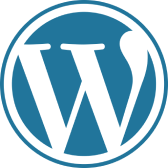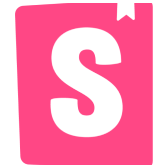What is a Headless CMS, in layman’s terms
In spite of the scary name, they’re actually very easy to understand: A Headless CMS is a content management system (think a database) that is decoupled from your website’s presentation layer (”the head”).
That means your content can get plugged into whatever “head,” or website structure, you want it to exist in.
Why would I want a Headless CMS?
Think of any growing business, and how their needs might change over time.
Early on, one person might be responsible for creating and updating the website, updating new articles, doing all the advertising, and so forth.
As the business gets bigger, imagine that the responsibility for the website’s head (UI) becomes someone’s full-time job. Someone else is working full-time on the content.
As this business goes and duties continue to separate, the web design team can’t have the content team constantly editing the site. Similarly, the content team wants to focus on content, not web design.
So the two teams need a way for their work to be collaborative without impeding the other team. That’s where a Headless CMS comes in.
The website design team can set up a format for how web pages should look, act, and feel. The content team can create content that automatically fits into the framework the web team has set up.
Additionally, when you do change your content, you change it in one place, one time. Those changes are then updated on every platform your content is on. No time wasted on changing it for different platforms. Perfectly consistent, every time.
What makes a Headless CMS different?
Most content creators and website creators are familiar with the workflow of tools like WordPress. To a novice, this might seem close to a Headless CMS, but not quite. In a tool like WordPress, a user can create content, then create a website to display that content. This all happens through WordPress user interface.
A Headless CMS decouples this. Users create content in the Headless CMS’ user interface, but do not create the website itself. Instead, the Headless CMS hooks into a website’s code and gives the code the content to display.
You can even hook this same Headless CMS into an Apple or Android App, email, or have it displayed in any digital format. This gives you one central location to manage all of your organization’s content.
Comparing different CMS types
| Traditional CMS | Headless CMS | Stackbit | |
|---|---|---|---|
| Choose your own frontend | ❌ | ✅ | ✅ |
| Choose your own tech stack | ❌ | Depends | ✅ |
| Visual Website Editor | Depends | Depends | ✅ |
| Multi-Device compatibility | Limited by your CMS | Responsive | Responsive |
| Business user workflow | Limited by your CMS | Limited by your CMS | Customizable to your team’s workflow |
| Developer Customizability | Limited by your CMS | Limited by your HCMS | Unlimited |
| Code Ownership | ❌ | Depends | ✅ |
How does the tech I use fit with Headless CMS?
Bring your own tech stack
Since creating content is decoupled from the website building experience, a Headless CMS allows you to choose your tech stack. Most Headless CMS tools serve you your content via an API that can be consumed by your team’s preferred tooling and structured in a way that you decide.
Whether your website is built in Next.js, Gatsby, React, or really anything, you’ll be able to use a Headless CMS with your preferred tech stack.
Stackbit takes this a step further. You can use Stackbit as a Headless CMS out of the box. Or you can bring in your own Headless CMS tool and use our visual website editing experience on top. All while owning your own code and using your own tech stack!
How Headless CMS Content is Consumed via API
Most Headless CMS tools allow business users to create and publish content from a web application. This content is then hosted in the cloud, and accessible by your front-end website via API.
There are two main benefits to this: 1) Content and new web pages are published in a secure, scalable, and standardized way. 2) You control the front-end website that displays the data from the Headless CMS, allowing you to have control over tech stack, speed, SEO, and all the customization you’d need.
Headless CMS can work with your workflow
In a traditional website creation workflow, business users create content to hand to the website team to add it to the code and publish it. This leads to a waterfall approach, where one team’s work is dependent on another’s occurring in sequence. Eventually, gaps and overlaps appear, causing loss of productivity, time wasted, and wonky-looking websites.
With a Headless CMS, collaboration is much easier. The website team and business team have clearly defined boundaries to their work. They can work at their own speeds and then publish content in a structured way.
Stackbit takes this further by providing a visual site builder for the business team. The web dev team creates the reuse-able components and content model. And the marketing team places these where they are needed on the site.
Why should I use a Headless CMS?
Headless CMS Scale Amazingly Well
Headless CMS solutions make your business scalable in several ways:
Less Content Duplication
When your content is managed and stored in a single place, it can be served to any and all devices that your users are on. Instead of changing the content for every use case, your website team has full control of how content should look on each platform.
When you do change your content, you change it in one place, one time. Those changes are then updated on every platform your content is on. No time wasted on changing it for different platforms. Perfectly consistent, every time.
Code Ownership
Modern tools, like Stackbit, let you bring your own tech stack, or simply work in the tools and frameworks you prefer. When you own the code, you’re in control of how your website gets delivered to the world.
There’s never a case where you’re out-scaling your vendor. Since you own the code, you make the decisions on hosting and web resources that impact site speed and core user experience.
Flexibility
Tech users get the flexibility of choosing their preferred tech stack, owning their code, and being able to standardize the workflow for business users.
Business users get the flexibility of publishing websites without over-relying on the tech team, but they have to work in a database-looking UI.
With Stackbit you get a complete solution for website building — devs own the code and headless CMS tooling, while marketers get to use a visual website editor on top.
In fact, you can even integrate a Headless CMS like Contentful or Sanity with Stackbit so your content creators still get a visual editing experience.
Speed
When you don’t have to manage website concerns every time you publish content, you substantially increase the pace at which your business team and website team can work.
A Headless CMS enables this by creating a standardized way for content to be created by your business team and consumed by your website team for use on your digital platforms.
Stackbit takes this further by allowing business users to create new pages, add components, change layouts, etc via Stackbit’s visual editor.
The rules for this editor all relate back to the how website dev team sets up the content model in the Headless CMS. This means that business users can create without fear of straying from brand identity and work confidently within the boundaries you’ve set for them.
How do I transition to a Headless CMS?
Transitioning to a platform like Stackbit is straightforward, even for enterprise businesses.
Book a free consultation with us. We’ll talk you through all your decisions around architecture and migration, and help you build a plan you’ll be confident moving forward with.
The Best Headless CMS for Enterprises
Stackbit is a visual site builder with unparalleled technical flexibility.
It's the scalable site-building platform that organizations use to launch 1 or 1,000 websites. With Stackbit you can unlock marketing’s power to drive impact with a platform that developers can fully control and customize.
Click here to see Stackbit explained in 60 seconds.
Frequently Asked CMS Questions
What is a CMS?
A CMS is a Content Management System. It’s a broad term for tools from Stackbit to WP Engine Atlas that let you manage content separately from your code. This allows you to reuse content in multiple places and across multiple digital properties.
What’s the difference between a CMS and a Headless CMS?
A CMS is a tool for creating and editing content that also includes a frontend website for displaying the content. Traditional examples are Wordpress, Acquia, and Adobe Experience Manager.
A Headless CMS allows for the creation and editing of content while being “headless,” or detached from the frontend of a website. This lets users have control over how content gets delivered to their users, and own the end-user experience.
Can I use a Headless CMS with my tech stack?
It depends! With a solution like Stackbit, you get to choose and bring your own tech stack. No dependencies or frameworks, just working in the tools you already know.
What is Stackbit?
Stackbit is a site builder that lets you bring your own code, Headless CMS, and workflows. From smaller projects to enterprise-grade websites, Stackbit is configurable to fit into your existing workflows. Work the way you want to with the tools, content platforms, and services you're already using - no matter how many pages, editors, developers, or websites are involved.
Why is code ownership important?
When you own your code, you make the rules. Your tech team can optimize or build in whatever you need without any constraints. That means your marketers and authors can keep growing the business without any constraints too.
Is there a tutorial for using Stackbit?













